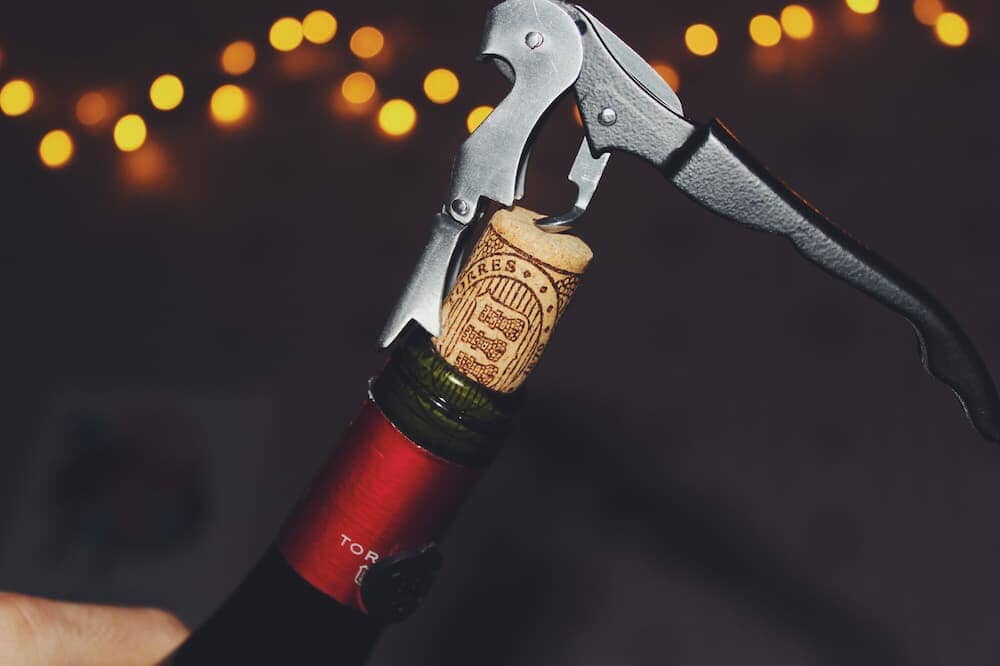Uncorking a bottle of wine should be straightforward; yet, the task of using a corkscrew can be intimidating for some. However, it doesn’t have to be.
Mastering the art of using a corkscrew effectively is crucial for any wine enthusiast. Whether using a classic wine key or an electric wine opener, ensuring a smooth and efficient uncorking process enhances the enjoyment of every wine bottle.
Throughout this blog, we will discuss everything you need to know about using a corkscrew effectively, from selecting the right corkscrew to achieving the perfect uncorking technique. For more information on how to use a corkscrew effectively, read on!
Why is Choosing the Right Corkscrew Important?
Before opening a bottle of wine, whether it be your favourite white or red wine, it's crucial to have the right tool for the job. Wine openers come in various shapes and sizes, each designed to cater to different preferences and types of corks.
The waiter's corkscrew is a classic tool and is a favourite among wine enthusiasts for its simplicity and portability. Featuring a compact design with a small blade for cutting the foil and a worm screw, it's perfect for those who appreciate a traditional approach.
Another common tool used to uncork wine is the lever corkscrew, also known as a rabbit or winged corkscrew. This model adds a mechanical advantage to the process.
With its two levers, it minimises the effort required to pull out the cork, making it an excellent choice for those who may struggle with a traditional wine opener.
Ideal for vintage or delicate corks, the ah-so corkscrew features two thin metal prongs that slide down the sides of the cork. This gentle method minimises the risk of crumbling or breaking the cork, ensuring a smooth extraction.
What Should You Consider When Purchasing a Corkscrew?
When purchasing a corkscrew, several factors should be considered to ensure you choose the right one for your needs. Here are some important things to consider.
Firstly, consider the build quality of the product. Look for a corkscrew with a sturdy construction, especially the spiral and handle. Stainless steel is a common and durable material.
A well-designed spiral is crucial for easy cork removal. Consider a corkscrew with a Teflon or non-stick coating for smoother operation.
Moreover, consider the ease of use, especially if you're not familiar with corkscrews. Waiter's corkscrews are generally user-friendly and compact.
Some corkscrews come with additional features, such as a built-in foil cutter, bottle openers, or even vacuum pumps for wine preservation.
If you want to preserve the integrity of the cork, especially with vintage wines, consider a corkscrew designed to minimise cork damage.
Check reviews and product descriptions for durability. A corkscrew should be able to withstand regular use without losing its effectiveness.
Take into account reputable brands known for producing reliable and durable corkscrews. Reading reviews can help you gauge the reputation of a particular brand or model.
Consider your budget. Corkscrews are available at various price points. Determine your budget and look for a corkscrew that offers a good balance of quality and affordability.
Some people appreciate corkscrews with unique designs or those made from high-quality materials for aesthetic reasons. Think about personal preferences and style. If you frequently open a wine bottle with longer corks, you may want a corkscrew with a longer spiral.
By considering these factors, you can choose a corkscrew that meets your specific preferences and requirements. Whether you prioritise portability, ease of use, or additional features, there's likely a corkscrew that suits your needs.
How to Uncork Wine the Right Way
Now that you have the right corkscrew, it's time to grasp the uncorking technique. Start by removing the foil or wax covering the cork.
Most wine bottles have a tab to assist with this, but if not, use the corkscrew's blade to make a clean cut just below the lip of the bottle. Take care not to cut yourself.
Position the worm screw at the centre of the cork. Ensure it goes in straight and doesn't veer off to the side. Twist the corkscrew into the cork with gentle pressure. For Waiter's Corkscrews, use the double-hinge feature to lift the first part of the cork.
However, if you're using a lever corkscrew, press down on the levers to partially raise the cork. With each press, the cork should rise further. Be cautious not to rush this process, as a steady, controlled motion is key.
The final extraction requires a smooth, steady pull, regardless of the corkscrew type. Hold the bottle firmly with one hand and pull upward with the other. Ensure your hand remains steady to prevent spillage or accidents.
How to Tackle Problems Associated with Using a Corkscrew
Even seasoned wine enthusiasts encounter stubborn corks from time to time. Here are some tips to help you through these situations.
If the cork seems resistant to the corkscrew, twist the worm screw slightly to the side and try again. This adjustment can help navigate around any obstructions in the cork.
For older or delicate corks, the ah-so corkscrew is your best friend. If the cork starts to crumble, use the prongs to gently remove it, avoiding any unnecessary force.
In the unfortunate event of a broken corkscrew, use a sturdy pair of pliers to grip the exposed part of the worm screw and continue the removal process cautiously.
How Can You Maintain Your Corkscrew
Proper maintenance ensures your corkscrew remains a trusty companion for years to come. After each use, wipe it clean with a damp cloth to remove any wine or residue.
Regularly check the worm screw for any bending or warping, as this can affect its performance. If you are using a lever corkscrew, inspect the levers for any signs of wear.
Using a corkscrew is not only a practical skill but also an enjoyable one. As you become more adept at uncorking bottles with ease, you'll enjoy your overall wine-drinking experience.
So, whether you opt for the classic waiter's corkscrew, the efficient lever corkscrew, or the delicate ah-so corkscrew, the key lies in patience, precision, and a touch of flair. Corkscrews are a great way to remove the cork from the bottle's neck without damaging it.

